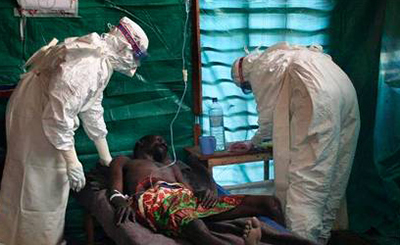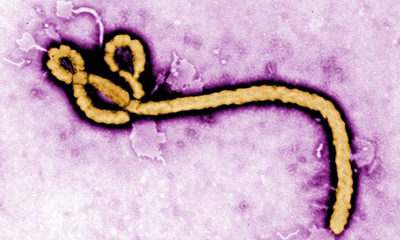
Source: www.realscience.us
“There’s no specific drug to treat Ebola. Patients need constant supervision to make sure their blood pressure doesn’t crash to deadly levels, one by one they die. A Major Public Health threat to mankind”
– Dhesi Baha Raja
Yambuku, It all started here. In 1976, major hospitals and dispensaries for almost 60,000 villagers in Zaire were operated by Belgian Catholic missionaries in a village called Yambuku. Seventeen nurses and nuns with no proper qualification ran the show. They attended to the community out of modesty. There were no doctors in Yambuku. This small team of nurses and nuns were considered the most hardworking health providers juggling between wards to keep everyone safe and healthy. The hospital had no sophisticated laboratory facilities to aid in diagnosis, so they could only guess what might be happening. Patients coming in dehydrated, bleeding from almost every part of their body. No one had any idea what was really happening. The nearest they could get was to come up with a diagnosis of yellow fever or thypus. They pumped in antibiotics, chloroquine, vitamins and intravenous fluids to offset those who were dehydrated…but they failed. Nothing seemed to work. What more can you expect when someone bleeds from their eyes as they cry for help…one by one…they died.
They were then buried. It seemed that the healthcare workers were busier helping relatives bury their loved ones rather than saving them from this deadly microbe. By tradition, readying a body for burial requires evacuating all excreta (foods) which are usually performed by bare hand and these poor nurses and nuns had no idea what they are getting into.
As days went by, the hospitals were flooded with people suffering from the same symptoms. Panic spread as village elders spoke about a curse that made people bleed to death. The horror magnified when patients started to developed strange behaviour, some tore their clothing and ran naked, others cried with bloody tears without recognizing their wives, husbands and children. The situation was getting out of hand to the point that some infected people were even burned by hysterical neighbours.
Finally, one of the Medical Directors in Zaire, arrived. Dr Ngoi Mushola. But he was helpless as no one had any clue of the disease. He started collecting every case, clinically and laboratory samples. Nothing helpful had been discovered. Professors and academicians flew in to Yambuku to solve this mystery BUT unfortunately they brought no protective gloves, masks and gowns for their use during procedures which left them in hazardous contact with infected blood. Everyone worked around the clock to solve this mystery and they found NOTHING. Autopsies were then carried out for sophisticated laboratories analysis. Again they found NOTHING.
Dr William Close, who was the personal physician to President Mobutu Sese Seko directed a nongovernmental medical development group called Cooperation Medicale to help out. He then contacted CDC Atlanta to seek full laboratory support to determine the outbreak in Yambuku.
Back in the hospital, more staff contracted with the disease. Now, ten of the seventeen employees were either dead or too sick to continue to serve the community. Things were getting out of control, the only weapon they had were …PRAYERS.
President Mobutu expressed concern about containing the epidemic, ordered all roadways, waterways and airfields in the region to be placed under martial law. This lead to a more devastating situation whereby the transportation of food and goods in and out of the area came to a full stop within a week. Yambuku and the villages surrounding Yambuku looked like a ghost town. What a horrible nightmare for everyone, remenisce of the smallpox epidemic of the 1960’s.
At the same time the scientist heard news that there was another strange epidemic in a town called Maridi, southern Sudan. Information was scarce and the authorities in Sudan had no radio contact. However rumours spread that it resembled those in Yambuku. With the help of WHO in Geneva, from the distant vantage point, they immediately ordered all blood and tissues samples from Maridi & Yambuku to be sent to Geneva. The greatest fear was the epidemics of Yambuku and Maridi were one and the same, representing a disaster spanning over 1,000 square miles in at least two nations.
In view of this, WHO enlisted high security laboratories all over the world. Blood samples and tissues from Yambuku and Maridi was sent to CDC Atlanta, to UK (Microbiological Research Establishment, Porton Down, Salisbury), to Belgium (University of Anvers), West Germany (Bernard Nocht Institute for Naval & Tropical Disease and France (Branch of Pasteur Institute).
Peter Piot, a 27 year old young boy, completing his virology post doctoral research in Anvers was part of the team. Piot eagerly prepared the sample for analysis; he gasped and stared at the strange virus. “THIS IS A NEW VIRUS!!!” he exclaimed feeling the thrill of discovery. They were shaped liked question marks. The virus was a long wormlike tube that coiled at one end and extended on the other end.
Just about the time that Piot discovered something new, WHO telexed that everyone in the group should cease research immediately since it could be the existing Marburg Virus that was killing the people in Africa.
Piot, marched to the Belgian Ministry of Development Cooperation and argued this case with his list of facts and analysis. Belgian government told him, “Okey Piot, we give you one week”.
Finally everyone agreed with Piot. On October 10, scientists informed WHO, that the illness was caused by a virus that resembles Marburg and that the epidemics in Zaire and Sudan were probably caused by an etiological agent that was similar to but represented a new type in the family of Marburg.
As days went by, many more were dying, it was important for every epidemiologist and scientist to come up with a laboratory diagnostic method in order to detect this viral culprit.
Karl Johnson, a virologist came up with something interesting at that crucial moment. His plan was to diagnose patients by putting patients blood sample on the microscope slides, waiting a while and then rinsing the slide. Those patients who are infected would develop antibodies against this mysterious microbe that would latch on to the infected vero cells. He then planned to put fluroscein, a molecule that glows under ultraviolet light and when he shone the ultraviolet lights to his slide, he will be able to detect which patient has an infected blood. Brilliant idea, time saved, lives saved. Finally they had a way to test who was infected and who had developed immunity towards this disease.
A full scale epidemiological survey for all the villages surrounding Yambuku was conducted, involving International Agencies. For nearly two weeks, the special task force augmented by dozens of trained local volunteers participated, surveying almost 550 villages, interviewed almost 34,000 families and took blood samples from 442 people.

Source: www.theguardian.com
On November 6, Zaire’s Minister of Health finally issued an International report that of the 358 cases of the viral disease, 325 were fatal leaving our fatality rate at 90.7 percent. This agent was a new virus and it was “EBOLA”, named after a river in the region where the disease’s first case appeared.
It has been almost 40 years since it had been discovered and now, this horrifying virus is back causing deadly outbreaks in Liberia, Sierra Leone, Guinea. 1093 probable, confirmed and suspected case have been reported and out of that, this virus has killed almost 650 people till this very day. One can contract the disease through bodily fluid and it takes 2 to 21 days for someone to develop symptoms and infect another person. Patients will develop early symptoms such as fever, headache, sore throat, joint pain and lack of appetite. At later stages, patients develop vomiting, diarrhoea and internal bleeding. Sadly, there is still no treatment or cure. Nevertheless, the infection can be controlled through proper preventive measures with the use of recommended protective gears in clinics and hospitals, at community gatherings, or at home. Due to the early detection and aggressive prevention, the fatality rate hovers between 60% and 90% in affected outbreak region.
Dear readers, this disease is deadly and contagious. Human to human transmission through bodily fluids via direct and indirect way is one of the main reasons why more people are dying today. I will end this with confidence that “Despite the fact that Ebola has been around the African region for 40 years and it is not something new, the condition is worsening and this is closely related to culture and behavior. It will not stop there, if the local community and authorities do not take a pro active role in preventing the disease through community mobilization and empowering them with the knowledge on basic hygiene, hand washing, universal precautions, food handling etc, it will kill more people. The same thing applies to us, Dengue is still within our reach, so let us all take full control of the disease and start today before it gets out of hand. You would not want to see the same scenario here….. Act today.
Dr. Dhesi BR is the founder of Malaysian Medical Gazette pursuing his PhD in public heath at UniMas, Sarawak. Learn more about him at the Team Page.
[This article belongs to The Malaysian Medical Gazette. Any republication (online or offline) without written permission from The Malaysian Medical Gazette is prohibited.]
References:
- Centre of Disease and Prevention (US): Ebola. http://www.cdc.gov/media/releases/2014/p0731-ebola.html
- WHO, Ebola Key Facts. http://www.who.int/mediacentre/factsheets/fs103/en/
- Atlanta Journal Constitution. To Treat Ebola. http://www.ajc.com/news/news/breaking-news/emory-healthcare-to-treat-ebola-patient/ngrtm/
- Coming Plague. Laurie Garette
- New Modern Epidemiology for Infectious Disease
- Advanced in Epidemiology Research and Laboratories Analysis
